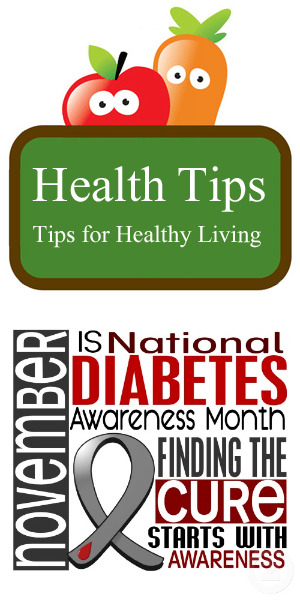
Each November communities across the country observe National Diabetes Month to bring attention to diabetes and its impact on millions of Americans.
Diabetes is one of the leading causes of disability and death in the United States. It can cause blindness, nerve damage, kidney disease, and other health problems if it’s not controlled. One in 10 Americans have diabetes — that’s more than 30 million people. And another 84 million adults in the United States are at high risk of developing type 2 diabetes.
Diabetes is a disease that occurs when your blood glucose, also called blood sugar, is too high. Sometimes people call diabetes “a touch of sugar” or “borderline diabetes.” These terms suggest that someone doesn’t really have diabetes or has a less serious case, but every case of diabetes is serious.
Blood glucose is your main source of energy and comes from the food you eat. Insulin, a hormone made by the pancreas, helps glucose from food get into your cells to be used for energy. Sometimes your body doesn’t make enough—or any—insulin or doesn’t use insulin well. Glucose then stays in your blood and doesn’t reach your cells. Over time, having too much glucose in your blood can cause health problems. Although diabetes has no cure, you can take steps to manage your diabetes and stay healthy.
Many forms of diabetes exist. The 3 common types of diabetes are:
- Type 2 diabetes, which results from a combination of resistance to the action of insulin and insufficient insulin production
- Type 1 diabetes, which results when the body loses its ability to produce insulin
- Gestational diabetes, a common complication of pregnancy.
When it comes to type 2 diabetes — the most common type of diabetes — prevention is a big deal. It's especially important to make diabetes prevention a priority if you're at increased risk of diabetes, such as if you're overweight or you have a family history of the disease.
Diabetes prevention is as basic as eating more healthfully, becoming more physically active and losing a few extra pounds. It's never too late to start. Making a few simple changes in your lifestyle now may help you avoid the serious health complications of diabetes down the road, such as nerve, kidney and heart damage. Consider the latest diabetes prevention tips from the American Diabetes Association:
1. Get more physical activity
There are many benefits to regular physical activity. Exercise can help you:
- Lose weight
- Lower your blood sugar
- Boost your sensitivity to insulin — which helps keep your blood sugar within a normal range
Research shows that aerobic exercise and resistance training can help control diabetes. The greatest benefit comes from a fitness program that includes both.
2. Get plenty of fiber
It's rough, it's tough — and it may help you:
- Reduce your risk of diabetes by improving your blood sugar control
- Lower your risk of heart disease
- Promote weight loss by helping you feel full
Foods high in fiber include fruits, vegetables, beans, whole grains and nuts.
3. Go for whole grains
It's not clear why, but whole grains may reduce your risk of diabetes and help maintain blood sugar levels. Try to make at least half your grains whole grains. Many foods made from whole grains come ready to eat, including various breads, pasta products and cereals. Look for the word "whole" on the package and among the first few items in the ingredient list.
4. Lose extra weight
If you're overweight, diabetes prevention may hinge on weight loss. Every pound you lose can improve your health, and you may be surprised by how much. Participants in one large study who lost a modest amount of weight — around 7 percent of initial body weight — and exercised regularly reduced the risk of developing diabetes by almost 60 percent.
5. Skip fad diets and just make healthier choices
Low-carb diets, the glycemic index diet or other fad diets may help you lose weight at first. But their effectiveness at preventing diabetes isn't known, nor are there long-term effects. And by excluding or strictly limiting a particular food group, you may be giving up essential nutrients. Instead, make variety and portion control part of your healthy-eating plan.
The good news? People who are at high risk for type 2 diabetes can lower their risk by more than half if they make healthy changes. These changes include: eating healthy, getting more physical activity, and losing weight.
We can use this month to raise awareness about diabetes risk factors and encourage people to make healthy changes.
Here are just a few ideas:
- Make small changes, like taking the stairs instead of the elevator.
- Get regular checkups. Be sure to have your blood pressure and cholesterol checked, and ask your health professional about your diabetes risk.
- Support local activities to promote World Diabetes Day on Tuesday, November 14th
Living with diabetes can be challenging to manage every day. You are the most important member of your diabetes care team, but you don’t have to manage your diabetes alone. Seek support from health care professionals, your family, friends, and community to manage your diabetes.


